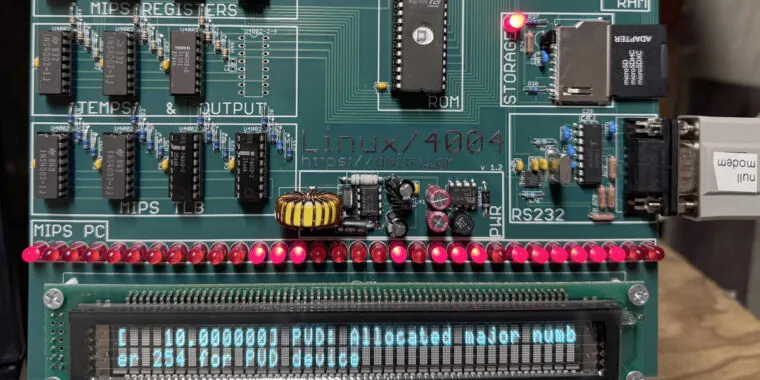
Mind-Blowing Achievement: Linux Boots on Intel 4004 in 4.76 Days!
2024-09-23
Groundbreaking Feat of Innovation
In a groundbreaking feat that fuses nostalgia with innovation, hardware hacker Dmitry Grinberg has successfully booted Linux on the Intel 4004, the very first commercial microprocessor. Launched in 1971, this processor is a technological relic, featuring a mere 2,300 transistors and an original clock speed of just 740 kHz. In an era when computing is defined by speed and power, this primitive chip takes an astonishing 4.76 days to boot the Linux kernel!
Originally engineered for a Japanese calculator, the Busicom 141-PF, the Intel 4004 had limited applications in the 1970s and was soon eclipsed by its more powerful successors like the 8008 and 8080, which paved the way for early personal computers and eventually the IBM PC revolution.
Feasibility of Running Linux on Limited Hardware
However, skeptics might wonder how running Linux is even feasible on such a limited piece of hardware. The answer lies in Grinberg’s ingenuity: rather than loading Linux directly on the 4004, he developed a remarkable emulator that simulates a MIPS R3000 processor—the architecture which Linux was originally designed for. This clever emulation allows a stripped-down version of Debian Linux to boot and reach a command prompt, albeit at a tantalizingly sluggish pace.
Grinberg isn’t new to the world of Linux on impractical devices; he previously set records by running Linux on an 8-bit microcontroller back in 2012. With recent advancements from others aimed at beating his record, he decided to challenge himself further—this time aiming for the very first microprocessor ever created.
The Challenge of Emulating Linux on a Stone-Age CPU
To achieve this monumental task, Grinberg faced a multitude of hurdles. The Intel 4004 is extremely constrained, with negligible ROM and RAM, lacking interrupt handling and even fundamental logical functions like AND and OR. His emulator employs ingenious techniques, including lookup tables, to extract every ounce of performance from this humble CPU.
The final setup includes not just the overclocked 4004—now running at 790 kHz—but also various vintage supporting chips from Intel's MCS-4 chipset. A vacuum fluorescent display (VFD) is incorporated to showcase Linux output, while user input is received over a serial connection, with the entire arrangement consuming a mere 6 watts of power.
Grinberg’s elaborate creation features a handcrafted circuit board designed with an old-school aesthetic—no vias, and only right-angle traces, lending it a retro charm perfect for wall-mounting. This unique assembly runs Linux commands at a glacial pace, turning the entire experience into an art form that could take days or even weeks to unfold.
Exploration of Technology's Limits
Though the project serves no practical purpose, it highlights Linux's versatility and the boundaries of emulation technology. Grinberg is exploring the possibility of making this experience accessible to others, contemplating whether to offer kits or pre-assembled boards for the adventurous at heart who wish to embrace Linux in its most leisurely form.


 Brasil (PT)
Brasil (PT)
 Canada (EN)
Canada (EN)
 Chile (ES)
Chile (ES)
 España (ES)
España (ES)
 France (FR)
France (FR)
 Hong Kong (EN)
Hong Kong (EN)
 Italia (IT)
Italia (IT)
 日本 (JA)
日本 (JA)
 Magyarország (HU)
Magyarország (HU)
 Norge (NO)
Norge (NO)
 Polska (PL)
Polska (PL)
 Schweiz (DE)
Schweiz (DE)
 Singapore (EN)
Singapore (EN)
 Sverige (SV)
Sverige (SV)
 Suomi (FI)
Suomi (FI)
 Türkiye (TR)
Türkiye (TR)